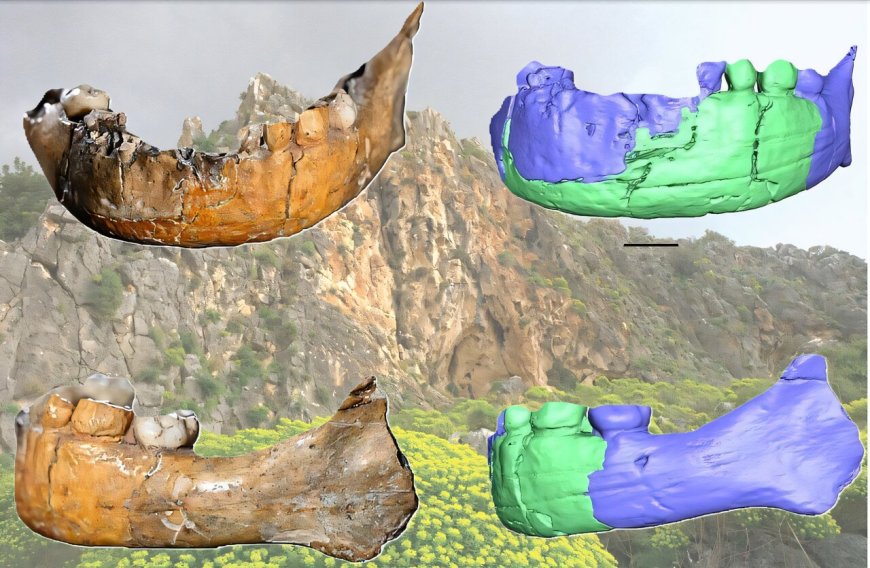Skhūl I Skull Analysis: Unveiling Insights into One of the Oldest Human Burials
Discover the latest findings from a new study analyzing the Skhūl I skull, a significant archaeological discovery dating back 140,000 years. The research sheds light on the hybridization in hominins and reclassifies the fossil as part of the 'Skhūl paleodeme.'

In 1931, the Skhūl I fossil was uncovered at Mugharat es-Skhūl (the Cave of the Children), also known as Skhūl Cave, Israel. It forms part of the oldest intentional human burials ever discovered, dating back to ca. 140,000 years ago. For decades, it became the topic of much debate over its taxonomic classification. Today it is widely attributed to Homo sapiens.
However, in the past few years, paleogenetics and cranio-facial morphology have updated our understanding of hybridization in hominins. With this in mind, Dr. Bastien Bouvier and his colleagues conducted a new study published in L'Anthropologie analyzing the neurocranial and mandible morphology by way of CT scans and 3D modeling.
Skhūl Cave is located in the Carmel Mountains, around 20 km south of Haifa, Israel. It was uncovered in 1928 by archaeologists Theodore McCown (1908–1969) and Dorothy Garrod (1892–1968).
McCown excavated and uncovered two individuals, of which seven were adults and three were children. An additional 16 individuals were identified on the basis of isolated bones. The first of the individuals to be uncovered was Skhūl I. The Homo fossil belonged to a child between the ages of three and five, and had a cranial capacity of around 1,100 mL.
At the time, it was attributed to the genus Paleoanthropus palestinensis and placed as a transitional phase between Neanderthals and modern humans. It was later re-classified as a proto-Cromagnoid, though later debate emerged over whether it may be a hybrid between a Neanderthal and a Homo sapiens.
While McCown and his colleague Sir Arthur Keith initially rejected the hybridization hypothesis due to the lack of contemporary or older Neanderthal fossils, the skull's mix of archaic and modern features warranted reanalysis.
Dr. Bouvier and his team conducted CT scans of the neurocranium and mandible with teeth. These were compared to CT scans of other Homo specimens, including \"classic\" Homo neanderthalensis and a late Pleistocene Homo sapiens specimen.
Many previous studies conducted their morphological analyses based on the skull's current preservation, however, the skull is incomplete and underwent post-mortem deformation, which altered the shape and in some cases the positioning of various bones.
The new analysis revealed the skull exhibited various similarities to different species. The cranial profile and vascular networks were more akin to Neanderthals, while its bony labyrinth was more similar to that of Homo sapiens.
External auditory features and tilt in the skull base are in line with Homo sapiens. Interestingly, the tilted backwards positioning of the foramen magnum (where the spine enters the skull) was most similar to Kabwe I, a Homo rhodensiensis specimen.
The mandible showed various archaic features, such as the inner (tongue-side) surface of the jaw, where the sloping bone behind the teeth (planum alveolare) tilts backward, indicating that the front of the jaw is angled more than 90 degrees. This backward tilt is an archaic Homo feature. A similar shape is also seen in another child from Skhūl Cave, called Skhūl X, who was about 8 years old.
Additionally, its teeth are positioned in a wide, rounded arch, similar to those of eastern and Western Neanderthal children. While its enamel surface is not similar to Neanderthals, the Skhūl I specimen exhibits a break in the mid-trigoid crest, the ridge that connects the dentin and enamel. This feature is typical of Neanderthals but lacking in modern humans.
The study indicates that the Skhūl I skull cannot be definitively attributed to Homo sapiens. However, until definitive DNA evidence is available, the researchers propose assigning Skhūl I to the \"Skhūl paleodeme\" rather than trying to force it into any known Homo taxa.
Dr. Anne Malassé elaborates on the potential for and considerations of DNA testing on Skhūl I, saying, \"No attempt has ever been made to analyze the DNA of the neurocranium; it is sufficiently preserved to allow the removal of bone from the petrous pyramid. But this is destructive, and the skull is unique.\"
Interestingly, despite Skhūl I's uniqueness, it seems the child was considered a full member of the group and given the same respect as others buried in the cave.
\"The body was compacted a second time, so it is no longer in the primary position to establish comparison, but archaeologists have never observed any special treatment of the body before and during its burial that distinguishes it from other individuals,\" explains Dr. Malassé.
According to the source: Phys.org.
What's Your Reaction?
 Like
0
Like
0
 Dislike
0
Dislike
0
 Love
0
Love
0
 Funny
0
Funny
0
 Angry
0
Angry
0
 Sad
0
Sad
0
 Wow
0
Wow
0













































































































































































